Design as Research Portfolio
PhD Submission
Full Concept
For the written portion for my PhD, I was fully committed to submitting work where the presentation reflected the theories being discussed. In order to do this, I created a stand-alone book for each chapter of my thesis, so that each chapter’s content could be reflected in its form. These books could be read in any order, as arguments were not hierarchically ordered and were woven between various sections. Knowing I would need to produce a limited edition of six copies over two runs allowed me to create a set of artist’s books, incorporating techniques that would be cost-prohibitive in a commercial setting. The image below shows the books collected, to show the variety of scales used, and I will discuss each book/chapter individually on the following pages.
Collected Outcomes: (see also the gallery here)
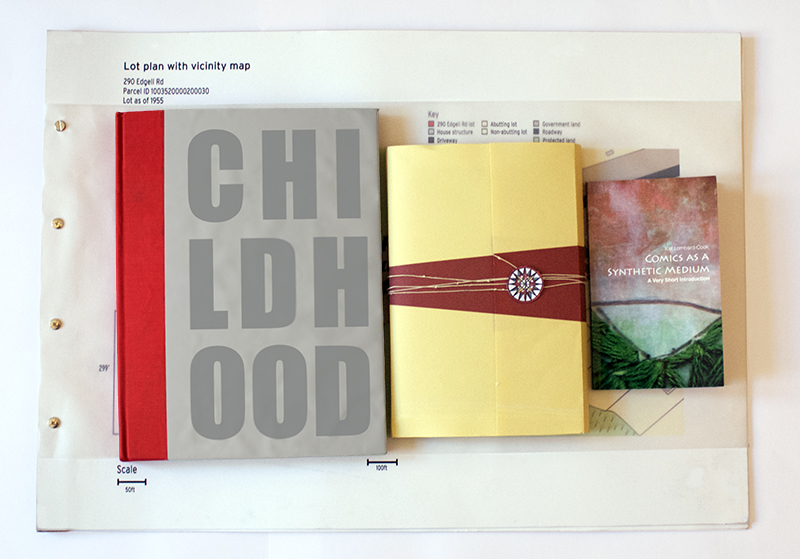
Comics as a synthetic Medium—A Very Short Introduction
Concept
This chapter is the most densely theoretical, and also the most traditional in form. I could have opted for the chapter that delves into the relationship between comics and the spectrums of knowledge encompassed by [post]modernism and [post]structuralism to be the most formally challenging, but I decided to allow the struggle for coherence to remain within the words. Instead I created a book that references the style of Oxford Press’ ‘A Very Short Introduction’ series, that has produced pocketbooks on most of the philosophers presented in this book. This disjuncture between theory and form is also a nod to Derrida’s concept of deconstruction, where the argument presented by a text in undermined by the very way in which the argument is presented.
Outcome
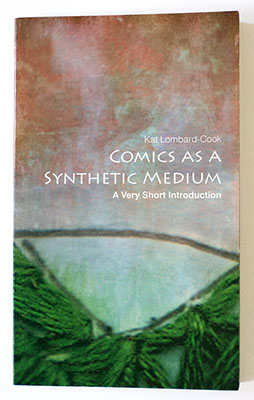
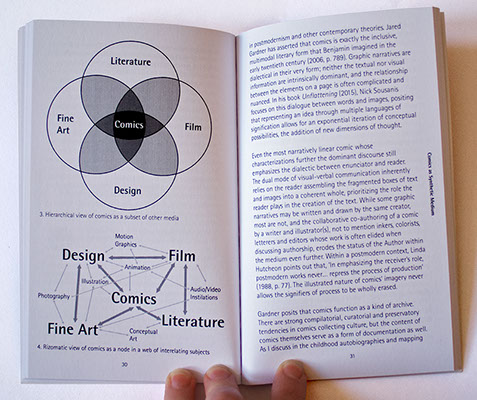
Comics as a Synthetic Medium—A Very Short Introduction:
- (left) Cover for paperback book;
- (right) Interior spread
Mapping the Journey—The Cartography of Autobiography
Concept
In this chapter I explore how maps inhabit a space of both subjectivity and objectivity within autobiographical comics. The format for this book is inspired in equal parts by field guides and the vinyl folder of road maps gifted to my when I first passed my road test. As well as analyzing the overlap of narrative structure in the intersection of mapping and comics, my writing breaks down the cultural assumptions of objectivity in cartography, and
as such the maps contained within are stripped of their navigational authority and deployed to illustrate my subjective relationship with the places depicted.
Outcome
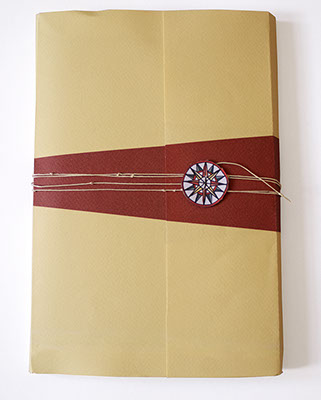
Mapping the journey—The cartography of autobiography:
- (left) Wrap-around cover;
- (below) Interior spreads
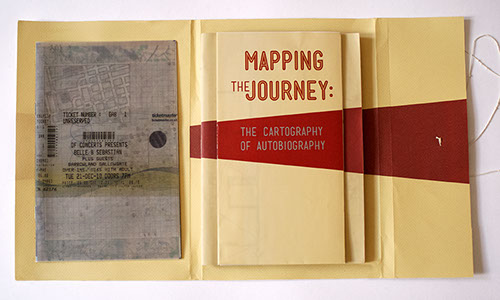
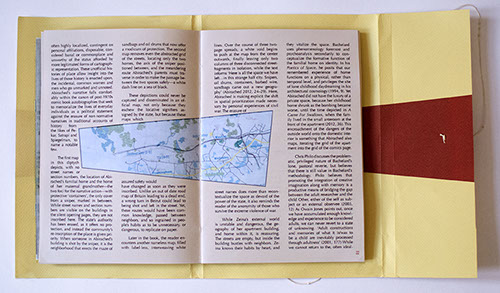
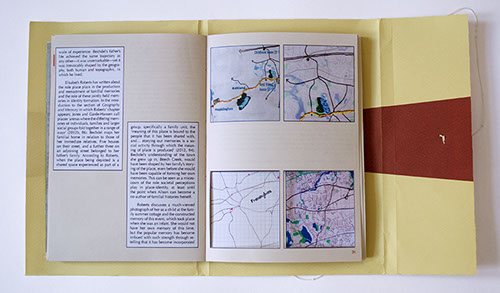
Childhood Memoirs—Autobiographical Approaches
Concept
Three case studies anchor this chapter on verifiability of memory in autobiography. Each memoir I analyzed had a very different approach to authenticity, so it was important to present the sections within this book as distinct from each other, while existing within a coherent whole. By hand-binding this case-bound book, I was able to integrate multiple paper stocks, inserts and paper engineering into a single object, allowing each constituent part to communicate individually. One section is a removable zine, another a young adult’s diary, and the third a children’s book, all of which is bookended by an introduction and conclusion presented on graph paper, to remind the reader of the analytical content presented in these varying forms. There are also aspects of my own familial story sprinkled throughout the book, juxtaposing my attempts at reconciling conflicting histories with the authors I am exploring in the text.
Outcome
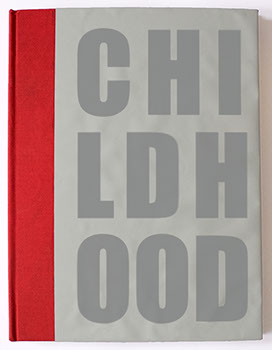
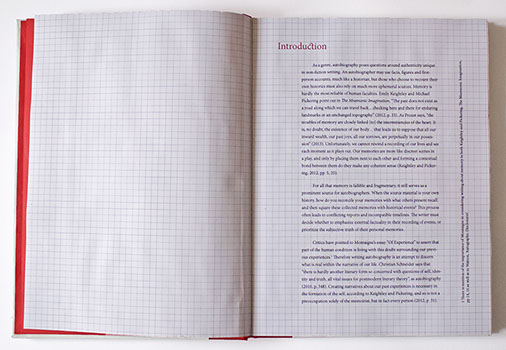
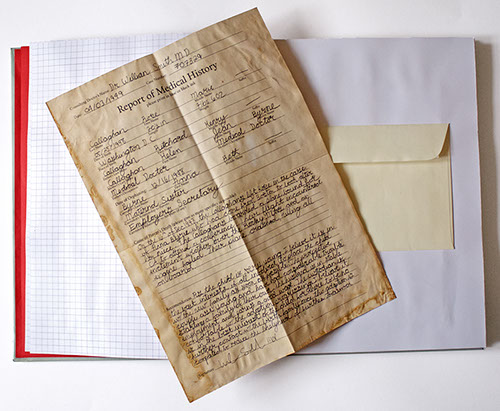
Childhood Memoirs—Autobiographical approaches:
- (above left) Cover: 3/4 paper, 1/4 cloth case binding;
- (above right) Example introduction spread;
- (left) Detail of inset ephemera
- (right) Interior zine inset and cover of diary section
- (below) Interior spread from zine inset
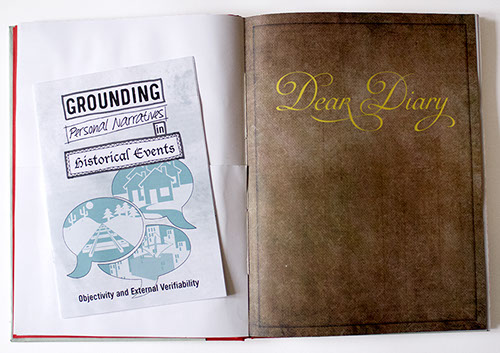
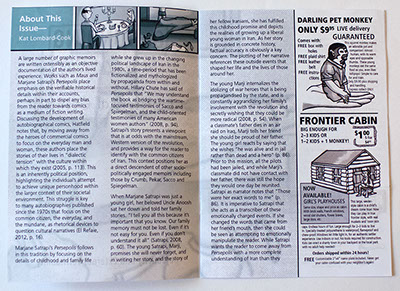
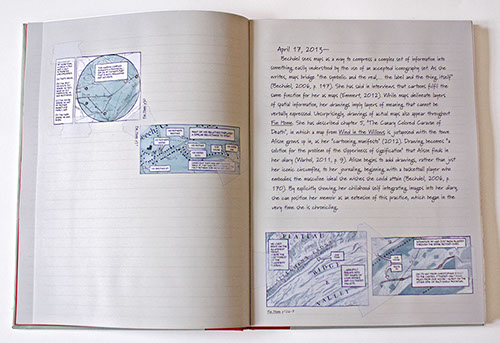
- (right) Example diary spread
- (below) Example children’s book spread
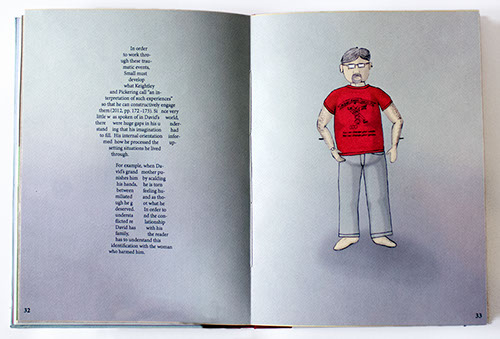
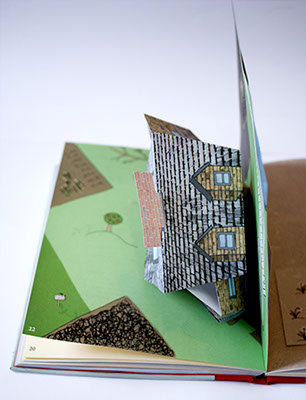
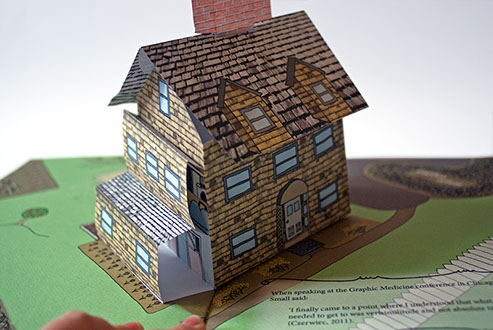
- (left) Detail of pop-up closing with page turn;
- (above) Detail of pop-up house in children’s book section;
- (below) Closed and open ‘DIY comic’ interactive spread
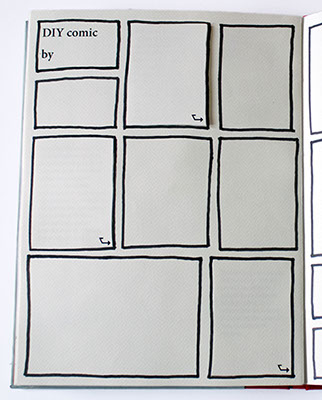
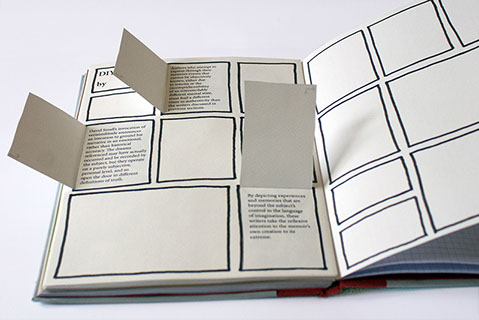
Media Specificity of Non-Traditional Graphic Narratives
Concept
Of all the chapters in my PhD, the one on media specificity had to be the most dependent on formal synergy. The presentation had to draw attention to the use of the printed format as a medium choice with repercussions to the reader’s experience and understanding of the content being communicated. I chose to scale the format up to A2 in order to make the handling of the book object awkward for the reader, making each page turn deliberate and onerous.
The pages of this book show plot and architectural information about the house I grew up in. The linearity of the academic text is enforced by the official nature of the plans depicted. The text is presented on the pages depicting the layout of the four floors of the house. While I wanted the reader to be overly conscious of the physicality of this book, I did not want to make the reading experience unpleasant. Each page showing a floor of the house flips open to show various furniture configurations, as I remember them, position of built-in fixtures and base materials. The text of the chapter is presented on the recto face of these flip-ups, introducing a sense of play into this book.
Outcome
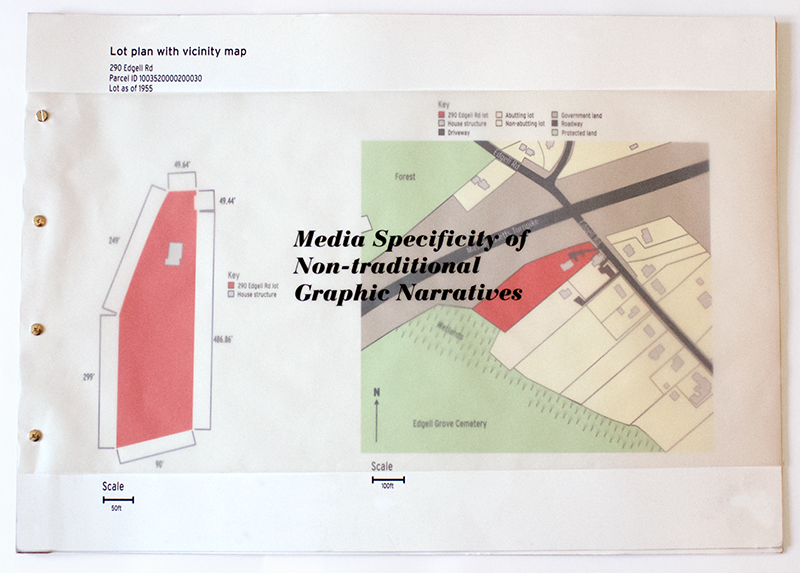
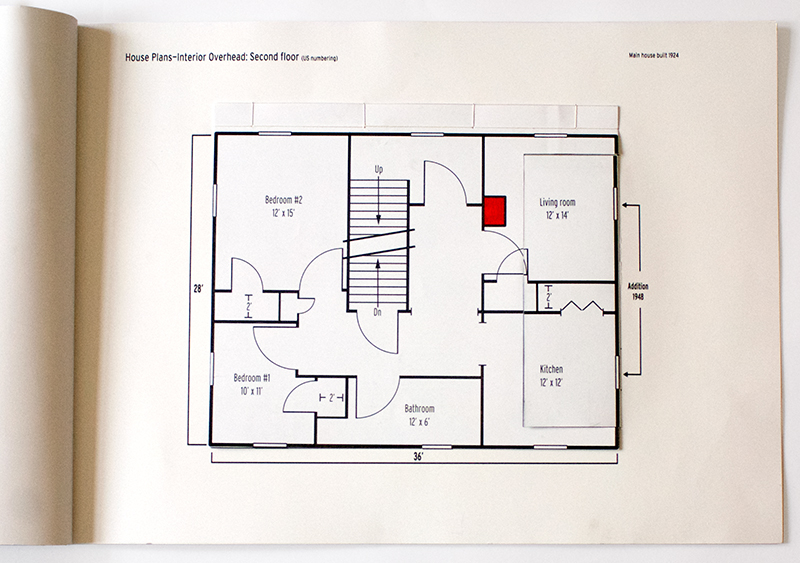
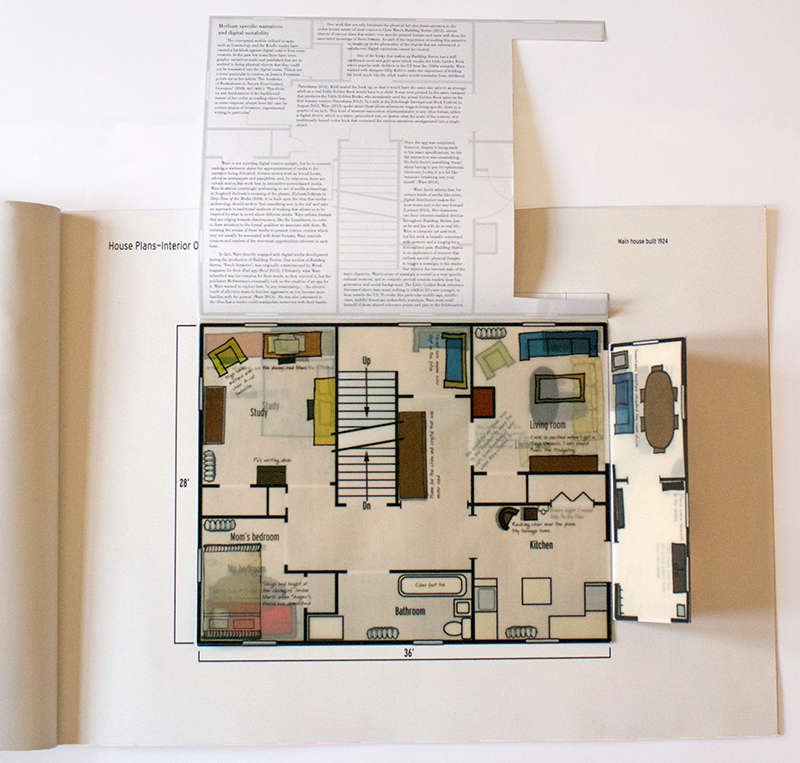
Media specificity of non-traditional graphic narratives (top to bottom)
- Cover of A2, post-bound portfolio
- Example interior text page (closed)
- Example interior text page (initial opening)

